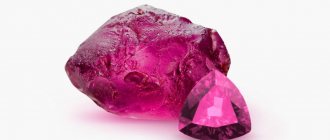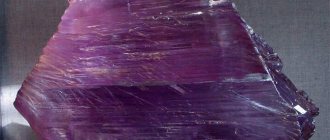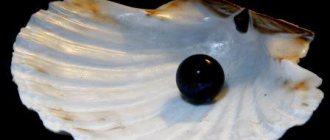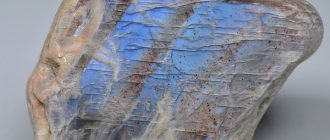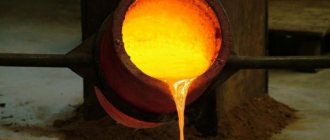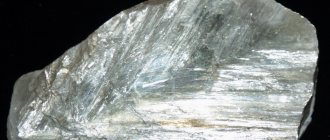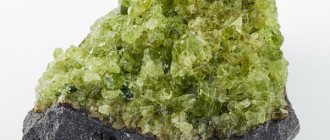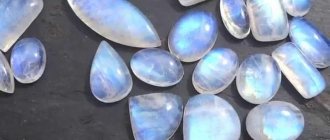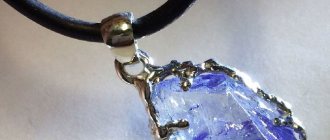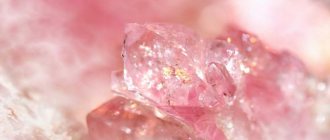Story
The fact that primitive man survived the confrontation with natural elements and predators is largely due to flint.
This pebble became the first tool for making fire; scrapers, drills, needles, and arrowheads were also made from it. Tribes leading a primitive way of life in the wilds of Africa or the Amazon still use them today.
Flint flint served as the “trigger” of firearms until the 19th century.
It is no coincidence that the name of the stone comes from the ancient Greek “kremnos”, which means “to burn”.
The millstones of hand and mechanical mills were also made of flint.
By hitting pebbles one against the other, you can create a spark. Modern children amuse themselves with them and tourists use them on occasion. They are part of a modern “survival kit”.
Storage and care
Flint is resistant to most external factors. It is not afraid of high temperatures, sunlight and weathering. The stone is not affected by acids and high temperatures. However, it is necessary to care for this mineral.
Store flint separately from other minerals in a box or fabric bag.
Products made from flint should be periodically cleaned of dust and dirt. To do this, wash the stone under cool water using a soft bristle brush. If it is very dirty, then add baby soap. Then the stone is rinsed, immediately wiped dry and placed for final drying in a dark, well-ventilated place.
It is not recommended to treat flint products with aggressive chemicals, spray them with steam, or throw them into boiling water. Mechanical stress can have a detrimental effect on the integrity of the mineral. A strong blow, despite its high strength, can cause flint to crack.
Description
Flint is an opaque rock, a type of quartz.
Color ranges from yellowish to black. Colors are determined by impurities (hematite, goethite, pyrite). Organic inclusions create black agglomerates.
Monochrome specimens are common; patterned or striped stones look exotic.
Typical flint is a fine-grained multicomponent formation of silica. Usually in limestone strata, it includes grains of quartz, chalcedony, and, less commonly, opal of microscopic dimensions. It is not uncommon to see zonal replacement of organic remains with stone. We are talking about corals and fossilized shells of extinct mollusks.
What does it look like?
Photo:
In appearance, flint can be confused with an ordinary cobblestone, but on the chip it is unevenly painted with multi-colored stripes.
Despite its hardness, the block with a matte sheen can be easily chipped with tools, and after striking dry fragments, sparks can be struck.
On opaque plates with a uniform structure and sharp edges, patterns of various colors are found.
Paleontologists suggest that sand or clay rock impregnated with gel-like silica is involved in the formation of flint.
In nature, deposits with stone veins look like rounded branches, threads of a spider's web.
Physico-chemical characteristics
To a chemist, the mineral flint is a silicate of sedimentary or volcanic origin. Its basic formula is simple, but such a variant is rare in nature. More often, the composition is complicated by impurities, of which the stone has plenty. They are “responsible” for the color and are indicated in the description.
| Rock type | Metamorphic rock |
| Mohs hardness of flint | 7 |
| Density | 2.6 g/cm3 |
| Color | The color is varied with a predominance of gray and dark gray tones. |
| Texture 2 | banded massive |
| Structure 2 | fine-grained |
| origin of name | from the Old Slavonic word “flint” - hard stone |
The strength and viscosity of agglomerates is a merit of the cryptocrystalline structure.
The peculiarity of flint is that it splits into thin plates with sharp, blade-like edges. It allows you to distinguish stone from imitation.
Flint: what kind of stone is it?
Flint is a natural mineral based on chalcedony and is not a precious stone.
The composition of the rock (stronger than granite) contains silica and a number of impurities with the advantage of limestone, and the variety of colors is provided by oxides of iron and manganese.
Flint got its name from the Greek name “kremnos”, which translates as “to burn”, since the fragments are capable of producing a spark.
Place of Birth
Flint is one of the most common rocks. There are deposits on all continents.
In addition to the island of Ruygen (near Germany), where the stone was first found, it is mined in Denmark, Poland, Kazakhstan, Belarus, Mongolia, Israel, and Great Britain.
In Russia, this is the north of the country: Karelia, Moscow region, Arkhangelsk, Belgorod, Tver regions.
"Black Slate"
These are black sheets of flint obtained by flaking rock. Organogenic origin. A mineralogical study revealed a high percentage of silicon content of about 50%. When infused for 24 hours, black slate gives a high percentage of silicon oxides transferring into water, higher than any known mineral water. Silicon water can be used for drinking, cooking, washing, compresses, gargling, etc.
The consumption of silicon water depends on the needs of each person.
Be sure to drain the silicon water from the stones and only then use it for cooking.
Don't boil the stones. Silicon water retains all its healing qualities for humans indefinitely. It is best to store it at room temperature in a sealed container. Aqueous solutions of medicinal herbs and mixtures using silicon water are much more effective than using regular tap water.
Silicon water is used in home canning to improve the quality of products.
Cut flowers and greens stay fresh longer in silicon water.
Areas of use
The very first use of flint in history was a device for making fire, scrapers, arrowheads, other tools and wars of Stone Age man.
Today, depending on the conditions, it is used by jewelers, stone-cutters, industrialists:
- The jewelry industry values chalcedony, jasper, and opals. These precious types of stone become jewelry inserts. There are also plenty of connoisseurs for black or spotted “pure” flint.
- Master stone-cutters cut candelabra, boxes, small plastic materials, and vases from colored materials. Black is used for exotic items such as “magic” pendants, stone knives or fire-making chairs.
- The rock is used to make slabs for countertops, fireplace, floor and panel slabs. This coating is valued for its minimal abrasion: flint is superior to granite in this parameter. For this reason it is in demand in public buildings, metro stations, and supermarkets.
The value of stone for other "practical" industries is also impressive. This is a raw material that increases the strength of non-ferrous and ferrous metallurgy products, an additive in concrete and other building mixtures.
Which zodiac signs is it suitable for?
The astrological vector of the influence of flint has been well studied over the long history of mankind’s acquaintance with the durable mineral.
The mineral has different effects on all signs of the Zodiac:
- Aries frees the mind from negative thoughts and strengthens leadership qualities.
- Taurus protects against problems with the respiratory system.
- Gemini more honest, add sincerity, and endow it with eloquence.
- Cancer will be rewarded with success in business and will help cure stomach diseases.
- Leos will lose the hardships of life and mental pain, and will become more solid.
- Virgos realize their own potential and strengthen their nerves.
- Libras determination and help get rid of kidney ailments.
- Scorpios with a stone in their pocket will increase their influence on people.
- Sagittarius will be saved not only from prejudices, but also from liver diseases.
- Capricorn will add attention, sincerity, and ensure career growth.
- Aquarius will point out people devoted to him and protect him from manifestations of evil.
- for Pisces to wear a gem - it will increase their aggressiveness.
A stone marked by the influence of Mars is most suitable for signs belonging to the Fire element. This is Aries, Leo, Sagittarius.
Price
In the Russian segment of the Network there are jewelry, household items and collection material from various deposits of the planet (price/rub.):
- tumbling (1.5-3 cm; Poland) – 70-130;
- agate-shaped cabochon (20x30 mm, Moscow region) – 260-340;
- ball (53-58 mm, Madagascar) – 2,200 – 2,600;
- bracelet (jewelry alloy, Poland) – 2,340;
- black flint (cut, 12x12x3 mm, Moscow region) – 3,270.
The price of jewelry is affordable, since the frame is made of ordinary metals and alloys.
Therapeutic effect
Flint is a traditional means of water purification. Even today they cover the bottom of wells and are sold for domestic use in homes with running water.
Along the way, the stone acts as an activator and structurer of water. That is, it releases its healing properties.
Healers claim that flint water heals all diseases and replaces soap.
It is recommended to drink water infused with black flints for fractures, bruises, and skin diseases. Or put pebbles on these places.
As a result, scratches, cuts, and other minor damage heal without a trace (that is, the formation of scars).
Even official medicine recognizes the usefulness of stone or water in destroying putrefactive microorganisms.
Historical facts
Historians believe that silicon began to form after the sedimentation of silicon gels began on sea bodies of water, which impregnated sandstones, limestones, dolomites, and various sedimentary layers. As a result of crystallization in large quantities, silicon began to appear.
The formations of such veins can take on bizarre branched, curved, finger-like shapes. That is why, even today, in any thickness of sedimentary rocks, silicon veins can be easily found.
Magic properties
The main magical property of flint is the concentration of human powers:
- A common attribute of magical rituals is a knife with a flint blade.
- It is recommended to buy a stone for a person who wants to increase willpower, become braver, more collected, and more purposeful.
Contemplation of a flint ball or pyramid calms the nerves and can attract a brilliant idea.
Raw flint is chosen as a home or office amulet. His magic neutralizes negative energy.
